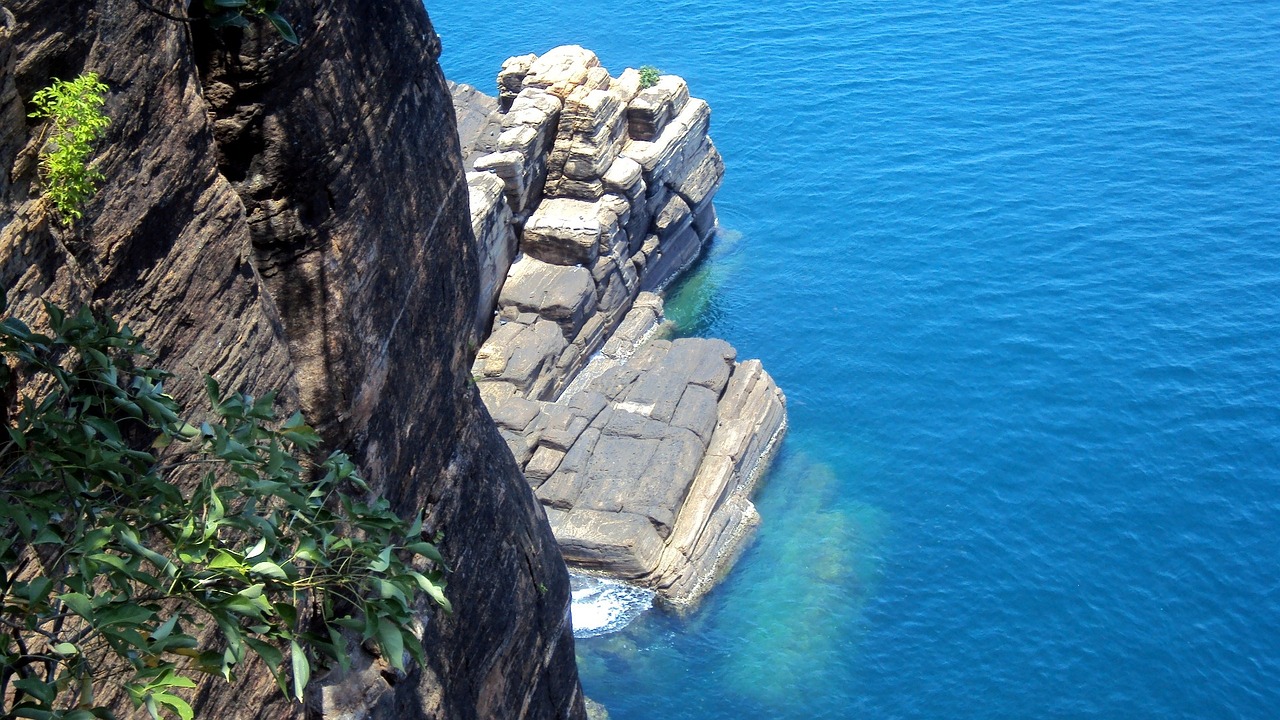Introduction
Nestled in the heart of the Indian Ocean, Sri Lanka’s Tourism and Hospitality Industry beckons travellers with its rich tapestry of experiences. From ancient ruins to pristine beaches, the island offers a diverse array of attractions that cater to every traveller’s desires. As one of the fastest-growing industries in the country, Sri Lanka’s Tourism and Hospitality sector plays a vital role in driving economic growth and promoting cultural exchange. With its warm hospitality and breathtaking landscapes, such as water falls of Sri Lanka continues to enchant visitors from around the globe, making it a sought-after destination for unforgettable experiences.
Table of Contents
Brief discussion on the industry’s resilience and growth:
Despite facing challenges such as political instability and natural disasters, Sri Lanka’s Tourism and Hospitality Industry has demonstrated remarkable resilience over the years. Through strategic planning and innovative initiatives, the industry has overcome adversity and continued to thrive. Investments in infrastructure development, promotion of sustainable tourism practices, and harnessing of digital technologies have been key drivers of growth, enabling Sri Lanka to emerge as a leading tourist destination in the region. As the industry looks towards the future, it remains poised for further expansion, fueled by a spirit of resilience and a commitment to excellence.

Historical Context
Historical Context on Navigating through Periods of Civil Unrest:
Sri Lanka’s Tourism and Hospitality Industry has traversed a tumultuous path marked by periods of civil unrest. Despite these challenges, the island nation has persevered, showcasing resilience and determination in the face of adversity. From the civil conflict that lasted for nearly three decades to sporadic incidents of political instability, Sri Lanka’s tourism sector has faced its share of obstacles. However, through strategic planning and concerted efforts, the industry has managed to navigate through turbulent times, emerging stronger and more resilient than ever before. Today, the scars of the past serve as a reminder of the industry’s ability to overcome adversity and chart a course towards a brighter future.
Impact of Global Pandemics on the Industry
In addition to civil unrest, Sri Lanka’s Tourism and Hospitality Industry has also grappled with the impact of global pandemics, most notably the COVID-19 pandemic. Like many countries around the world, Sri Lanka experienced a significant downturn in tourist arrivals and economic activity as travel restrictions and lockdown measures were implemented to curb the spread of the virus. The pandemic brought unprecedented challenges to the industry, including temporary closures of hotels and tourist attractions, loss of jobs, and disruptions to supply chains. However, despite these setbacks, Sri Lanka’s tourism sector demonstrated resilience and adaptability, with stakeholders implementing stringent health and safety protocols to reassure visitors and restore confidence in travel. As the world gradually emerges from the pandemic, Sri Lanka’s Tourism and Hospitality Industry stands poised for recovery, leveraging lessons learned from the crisis to build a more sustainable and resilient future.
In conclusion, Sri Lanka’s Tourism and Hospitality Industry has faced numerous challenges throughout its history, including periods of civil unrest and global pandemics. However, through resilience, innovation, and perseverance, the industry has weathered the storm and emerged stronger than ever before. As the country looks towards the future, it remains committed to overcoming obstacles and seizing opportunities for growth and development in the dynamic tourism landscape.
Factors Driving Growth
Key Factors Contributing to the Industry’s Rise:
Sri Lanka’s Tourism and Hospitality Industry has experienced remarkable growth in recent years, propelled by a combination of key factors that have contributed to its rise. One such factor is the island’s unparalleled natural beauty, which includes pristine beaches, lush greenery, and diverse wildlife. These attractions draw visitors from around the globe, eager to explore the island’s breathtaking landscapes and rich biodiversity. Additionally, Sri Lanka’s rich cultural heritage and historical significance add another layer of allure, with ancient ruins, temples, and monuments attracting history enthusiasts and cultural aficionados alike. Furthermore, the warm hospitality of the Sri Lankan people, known for their friendliness and generosity, creates a welcoming atmosphere that leaves a lasting impression on visitors. Combined, these factors form the foundation of Sri Lanka’s thriving tourism industry, driving growth and fostering economic development across the country.
Analysis of Market Trends and Demand Drivers:
In addition to natural beauty and cultural heritage, several market trends and demand drivers have played a significant role in shaping Sri Lanka’s Tourism and Hospitality Industry. One such trend is the growing popularity of sustainable and responsible tourism practices, with travellers increasingly seeking authentic experiences that support local communities and preserve the environment. As a result, eco-friendly accommodations, wildlife sanctuaries, and community-based tourism initiatives have gained traction, catering to the evolving preferences of environmentally-conscious travellers. Moreover, advancements in technology, including the rise of online travel platforms and mobile booking apps, have made it easier for tourists to discover and book accommodations, activities, and experiences in Sri Lanka. This digital revolution has transformed the way travellers plan and experience their trips, providing greater convenience and accessibility while opening up new opportunities for businesses within the tourism sector. By staying attuned to these market trends and demand drivers, Sri Lanka’s Tourism and Hospitality Industry can continue to innovate and adapt, ensuring sustainable growth and success in the years to come.
Strategies for Resilience
Innovative Approaches Adopted by Businesses:
In the face of challenges, businesses within Sri Lanka’s Tourism and Hospitality Industry have demonstrated remarkable resilience by adopting innovative approaches to adapt and thrive. One such proactive approach is the integration of technology to enhance the visitor experience and streamline operations with the assistance and leadership of Sri Lanka Tourism Development Authority (SLTDA) which is the government authority tasked with planning, development, regulation and policy implementation of tourism and related industries. From mobile apps for booking accommodations and tours to virtual reality experiences that offer immersive previews of destinations, technology has revolutionized the way travellers engage with Sri Lanka’s tourism offerings. Additionally, businesses have embraced sustainability practices to minimize their environmental footprint and appeal to eco-conscious travellers. This includes initiatives such as reducing plastic waste, conserving water and energy, and supporting local communities through responsible tourism practices. Furthermore, businesses have diversified their offerings to cater to changing consumer preferences, with the emergence of niche markets such as wellness tourism, adventure travel, and cultural experiences. By continuously innovating and adapting to evolving trends, businesses in Sri Lanka’s Tourism and Hospitality Industry have remained resilient in the face of adversity, ensuring sustainable growth and success.

Resilience-Building Measures in Response to Challenges:
In response to challenges such as natural disasters, political instability, and global pandemics, stakeholders within Sri Lanka’s Tourism and Hospitality Industry have implemented resilience-building measures to safeguard against disruptions and mitigate risks. One such measure is the development of crisis management plans and protocols to ensure swift and effective responses to emergencies. These plans outline procedures for communication, evacuation, and resource allocation, enabling businesses to mitigate the impact of crises on operations and guest safety. Additionally, businesses have invested in infrastructure upgrades and renovations to enhance resilience to natural disasters, such as reinforcing buildings against earthquakes and tsunamis and implementing flood mitigation measures. Moreover, collaborations between public and private sectors have been instrumental in developing resilience-building initiatives, including training programs for industry professionals, public awareness campaigns, and joint investment projects in tourism infrastructure by. By proactively implementing resilience-building measures, stakeholders in Sri Lanka’s Tourism and Hospitality Industry have demonstrated their commitment to ensuring the long-term sustainability and resilience of the sector, even in the face of uncertainty and adversity.
Future Prospects and Opportunities
Promising Avenues for Growth and Development
As Sri Lanka’s Tourism and Hospitality Industry looks towards the future, promising avenues for growth and development abound, presenting exciting opportunities for stakeholders across the sector. One such avenue is the country’s untapped potential for niche tourism experiences, including wellness tourism, eco-tourism, and adventure travel. With its diverse landscapes, rich cultural heritage, and warm hospitality, Sri Lanka is well-positioned to cater to the evolving preferences of travellers seeking unique and authentic experiences. Additionally, infrastructure development initiatives, such as the expansion of airports, highways, and tourist attractions, are poised to enhance accessibility and attract a larger influx of tourists to the island. Furthermore, the growing trend towards sustainable and responsible tourism practices presents an opportunity for Sri Lanka to differentiate itself as a leading destination for environmentally-conscious travellers, further bolstering its reputation and appeal on the global stage. By capitalizing on these promising avenues for growth and development, Sri Lanka’s Tourism and Hospitality Industry can unlock its full potential and pave the way for a prosperous future.
Potential Challenges and How to Address Them:
While the future of Sri Lanka’s Tourism and Hospitality Industry holds immense promise, it also presents potential challenges that must be addressed to ensure sustainable growth and success. One such challenge is the need for continuous investment in infrastructure and amenities to keep pace with growing tourist arrivals and changing consumer expectations. This includes improvements to transportation networks, accommodation facilities, and tourist attractions to enhance the overall visitor experience and support the industry’s expansion. Additionally, the industry must remain vigilant in addressing environmental concerns and promoting sustainable tourism practices to preserve the island’s natural beauty and biodiversity for future generations. Furthermore, geopolitical uncertainties, global economic fluctuations, and unforeseen crises such as pandemics pose ongoing risks to the industry’s stability and resilience, highlighting the importance of risk management and contingency planning. By proactively addressing these challenges through collaboration between public and private sectors, investment in infrastructure and sustainability initiatives, and strategic planning, Sri Lanka’s Tourism and Hospitality Industry can overcome obstacles and emerge stronger and more resilient in the years to come.
In conclusion, the future of Sri Lanka’s Tourism and Hospitality Industry is filled with promise, offering exciting opportunities for growth and development. By capitalizing on niche tourism experiences, investing in infrastructure and sustainability initiatives, and addressing potential challenges with foresight and strategic planning, the industry can unlock its full potential and thrive in an increasingly competitive global landscape. As stakeholders unite in their commitment to shaping a sustainable and resilient future, Sri Lanka’s Tourism and Hospitality Industry is poised to continue enchanting visitors and enriching communities for generations to come.
Conclusion
Recap of Sri Lanka’s Journey in the Tourism and Hospitality Sector:
As we conclude our exploration of Sri Lanka’s Tourism and Hospitality Industry, it’s essential to reflect on the remarkable journey this sector has undertaken. From its humble beginnings to its current status as a leading tourist destination in the region, Sri Lanka’s tourism industry has experienced exponential growth and transformation. Over the years, the island’s pristine beaches, lush landscapes, and rich cultural heritage have captivated the hearts of travellers from around the globe, establishing Sri Lanka as a must-visit destination for unforgettable experiences. Moreover, the warm hospitality of its people has left an indelible mark on visitors, creating lasting memories and fostering a sense of connection and belonging. As we look back on Sri Lanka’s journey in the tourism and hospitality sector, one thing is clear: it’s been a testament to resilience, innovation, and the enduring allure of this island paradise.
Reflections on the Industry’s Resilience and Potential for the Future:
In the face of adversity, Sri Lanka’s Tourism and Hospitality Industry has demonstrated remarkable resilience, overcoming challenges with unwavering determination and adaptability. From civil unrest and natural disasters to global pandemics, the industry has weathered countless storms, emerging stronger and more resilient each time. This resilience is a testament to the resilience of its people, who have embraced innovation, sustainability, and collaboration to navigate through turbulent times. Looking ahead, the future of Sri Lanka’s Tourism and Hospitality Industry shines bright, with promising opportunities for growth and development on the horizon. By building on its strengths, addressing challenges, and embracing innovation, Sri Lanka is poised to continue captivating the hearts of travellers and shaping a sustainable and prosperous future for generations to come.
In conclusion, Sri Lanka’s Tourism and Hospitality Industry has embarked on a remarkable journey marked by resilience, growth, and transformation. As we reflect on the industry’s past achievements and future prospects, one thing is certain: the spirit of hospitality and the allure of this island paradise will continue to enchant visitors and inspire the world for years to come.






One thought on “Overview of Sri Lanka’s Tourism and Hospitality Industry”
Comments are closed.